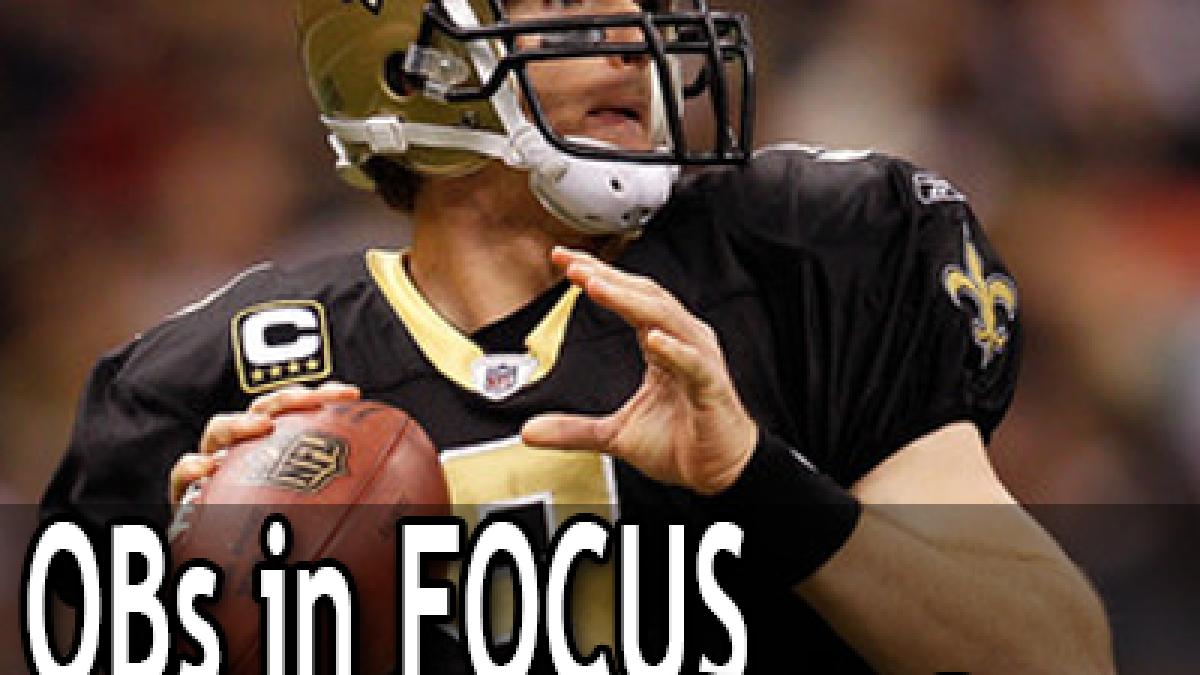 Though we certainly miss football during the offseason, it’s always a good time to take a step back and analyze our plethora of data.
Though we certainly miss football during the offseason, it’s always a good time to take a step back and analyze our plethora of data.
We’re often so busy grading and collecting data during the season that we’re unable to put a lot of the information to good use. With that said, we’ve decided to declare June as “QB Month” as we break down NFL quarterbacks every which way.
We’re going to examine quarterbacks from a number of situations before looking at each of them individually. The grades and numbers should reveal each quarterback’s strengths and weaknesses from the 2013 season.
As we go through this series, it’s important to understand the relationship between QB Rating (NFL’s version) and PFF Grade.
While QB Rating is obviously supposed to be a QB statistic, it’s actually a better gauge of what the entire offense did in a given situation. This is the type of information that is actually extremely valuable to our NFL team customers as their game planning efforts must go towards stopping an entire passing offense, not just the quarterback.
If the quarterback throws an easy dump off pass to the RB who then weaves through the defense for the touchdown, it’s certainly not a great indicator of quarterbacking skill as it is the running back and defense accounting for the majority of the work on the play. Of course the QB Rating will look quite shiny in that situation.
On the other hand, PFF Grade is a good indicator of how well the quarterback actually performed in a given situation. Whether they throw an accurate pass that was dropped, or perhaps an inaccurate one that should have been intercepted and the defense dropped, the PFF grade will account for those situations with a positive and a negative grade respectively while QB Rating will simply reflect the 0-for-1 passing.
It’s important to distinguish between QB Rating and PFF grade, though there’s a good chance they’ll match up in most situations.
After taking a look at the entire league in various situations, it’s time to break down each quarterback individually.
Drew Brees
All categories with a * are normalized so that the league average is 0.0.
Positives
• Second-highest grade on first down at +8.5 and third-highest grade on second down at +11.2.
• Third-highest grade on 3rd-and-medium (+6.4).
• Graded at +27.6 out of the shotgun and +35.4 on standard drop-backs.
• Among the league’s best on passes thrown in 1-10-yard range (+10.1), second-highest grade on passes thrown at least 20 yards (+11.7), and lead the league with a +9.0 grade on passes thrown in 21-30-yard range.
• Led the league with a +19.9 grade on passes in between the numbers.
• Second-highest grade against no pressure (+37.7).
• Second-highest grade against the blitz (+11.5).
• Third-highest grade on 7-to-8-yard drop-backs (+19.1) and highest grade on drop-backs of at least 9 yards (+14.8).
• Led league with +16.0 grade on passes in 2.6-to-3.0-second range.
• Led league with +39.0 grade on throws to wide receivers (by alignment).
• Led league with +13.7 grade on throws to tight ends and also led with +4.5 grade on throws to tight ends lined up wide.
• Tied for league lead with +6.0 grade on crossing routes, led league with +9.8 grade on hitches, and ranked second with +12.2 grade on go routes.
Negatives
• Graded at -2.8 on designed rollouts and -1.9 on plays that broke the pocket.
• Ranked in the bottom half of the league when pressured (-7.0)
• Was worse when pressured from traditional rush (-8.7) than against blitz pressure (+1.7).
• Struggled when drop-backs lasted at least 3.6 seconds (-5.7).
Tendencies
• Threw deeper passes outside the numbers to the left (11.7 average depth of target) than outside the numbers to the right (8.7 aDOT).
• Led the league with 176 drop-backs while using play action (25.2% of drop-backs).
• Led league with 197 attempts to running backs, 32.2% of attempts.
• Faced the blitz only 25.2% of the time (sixth-lowest) and faced-third down blitzes only 29.1% of the time (fourth-lowest).
• 35.8% of drop-backs came from under center, well above the league average of 24.9%.
• Left the pocket on only 2.9% of drop-backs; fourth-lowest in the league.
• Only faced pressure on 29.8% of drop-backs; sixth-lowest in the league.
• Threw 55.9% of passes in between the numbers; above the league average of 53.3%.
• 30.6% of drop-backs went at least 9 yards; above the league average of 24.6%.
• Only 66.3% of attempts went to wide receivers (by alignment); fourth-lowest in the league.
• Had the lowest percentage of passes thrown to outside wide receivers (by alignment) at 31.4%.
• Only 23.0% of passes went to actual wide receivers lined up on the outside; well below the league average of 40.2%.
• Led league with highest percentage of throws to running backs (32.2%), running backs out of the backfield (24.0%) and running backs in the slot (6.9%).
• Only 0.5% of attempts were comebacks, second-lowest in the league.
• Ranked fourth with 16.8% of passes to running backs on non-screens and ranked second with 7.5% of passes going to running backs on screens.
• Threw the second-lowest percentage of wide receiver screens (1.1%).
For the entire set of “Quarterbacks in Focus” posts, click here.
Follow Steve on Twitter.





 © 2024 PFF - all rights reserved.
© 2024 PFF - all rights reserved.